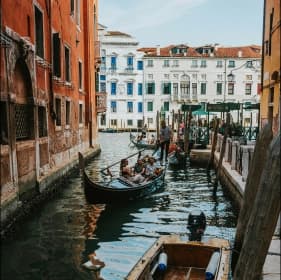Ponte Luís I
If there’s one image that captures the spirit of Porto, it’s the sight of the Ponte Luís I stretching across the Douro River — its tall iron arches connecting the historic city center with the colorful hills of Vila Nova de Gaia.
This double-deck bridge is more than just a way to cross the river. It’s a place for sunset walks, sweeping views, and living history, offering one of the most stunning perspectives of any city in Europe.
The Ponte Luís I was designed by Théophile Seyrig, a student and former partner of Gustave Eiffel (yes, the Eiffel Tower guy!). The bridge was completed in 1886, and at the time, it was the longest of its kind in the world.
Its two levels are supported by a giant iron arch — a masterpiece of 19th-century engineering that remains not only beautiful but extremely practical to this day.
-
Upper deck: Used by Porto’s metro (Line D) and pedestrians
-
Lower deck: For cars and foot traffic
💡 At the time of its construction, many believed the bridge would be too ambitious — but today, it’s considered one of Porto’s greatest landmarks
🌅 Why Visit Ponte Luís I?
This bridge isn’t just for getting from point A to B — it’s one of the most scenic walking routes in the city.
From the top deck, you’ll see:
-
The entire Ribeira district with its terracotta rooftops
-
The Douro River winding through the city
-
Boats docked in Gaia offering wine cellar tours
-
The Clérigos Tower and Porto Cathedral rising in the background
-
Unforgettable sunsets that paint the whole city in gold and pink
📸 Tip: The upper deck is one of the best photo spots in Porto — especially at golden hour.
📚 A Bridge With a Royal Name
Ponte Luís I is named after King Luís I of Portugal, who reigned during the bridge’s construction. He was known for promoting infrastructure and scientific development.
Interestingly, Seyrig originally competed against Eiffel himself for the bridge’s design — and won. It was a time when iron was the future, and this bridge helped mark Porto as a modern European city.
🇵🇹 It’s one of several iconic metal bridges that define the industrial-meets-traditional skyline of Porto.
🧭 How to Cross the Bridge Like a Local
-
🚶 Upper deck: Pedestrians and metro only. Calm, wide, and perfect for pictures.
-
🚗 Lower deck: Shared by cars and walkers. Great for getting close to the water and snapping riverbank views.
-
🚋 Take the yellow metro (Line D) and get off at Jardim do Morro (on the Gaia side) or São Bento (on the Porto side) to experience the full crossing.
🧳 Local Tips for Visiting Ponte Luís I
-
🧭 Start in Ribeira (Porto side) and walk across the top deck to Jardim do Morro — where you can relax on the grass with a drink and a view.
-
🌇 Don’t miss sunset — locals gather every night for it.
-
📷 Shoot from the base near Cais da Ribeira for dramatic angles of the bridge.
-
🍷 Explore the wine cellars in Vila Nova de Gaia just after crossing
— it’s home to the famous Port wine lodges.
🗺️ What’s Nearby?
Once you cross the bridge, you’re within walking distance of Porto’s most exciting spots:
On the Porto side:
-
Ribeira district – Colorful houses, cafes, and riverfront buzz
-
São Bento station – With its stunning blue tile murals
-
Porto Cathedral (Sé do Porto) – Historic and perfectly placed for panoramic views
On the Gaia side:
-
Jardim do Morro – Perfect for picnics and photos
-
Mosteiro da Serra do Pilar – A monastery with one of the best lookouts in the city
-
Port wine cellars – Tour and taste the region’s most famous export
🛠️ Quick Facts
-
Completed: 1886
-
Architect: Théophile Seyrig
-
Material: Iron
-
Length: 385 meters
-
Height: 45 meters above water (top deck)
POPULAR DESTINATIONS

2 Days Route in Venice
Explore best spots of Venice in 2 days lorem ipsum dolor si lorem ipsum dolor si lorem ipsum dolor si

2 Days Route in Paris
Explore best spots of Venice in 2 days lorem ipsum dolor si lorem ipsum dolor si lorem ipsum dolor si

2 Days Route in Rome
Explore best spots of Venice in 2 days lorem ipsum dolor si lorem ipsum dolor si lorem ipsum dolor si


